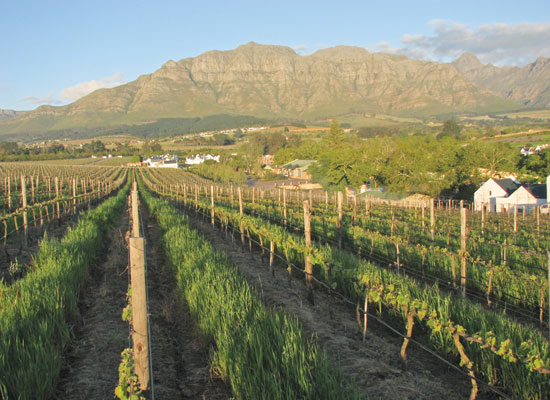Importers toast the future of South African wines
Updated: 2013-01-12 09:36
By Lu Chang (China Daily)
|
||||||||
As the taste for foreign wines grows in China, the Cape producers look to the country to make up for falling demand in the European market, reports Lu Chang
Despite a surging demand for wine in China, South African makers have been unable to make much headway in the market, due to stiff competition from European and other major wine producing countries.
|
 |
|
The Kleine Zalze vineyard in South Africa. The nation's wine makers are being forced to make greater inroads in China, after falling demand from Europe. [Photo/China Daily] |
Wines from France, Italy, Spain, Australia, Chile and the US - collectively known in the industry as "the big six" - account for 90 percent of the country's foreign wine consumption, the latest industry figures show, with South African wines accounting for just 3 percent of the Chinese market.
But experts now say that could all be about to change.
"Is it tough to sell South African wines? Yes," said Jim Boyce, a well-known wine writer, who runs the industry website Grape Wall of China.
"Most people know little about them. They don't have easy access to them in some cities, and instead tend to buy from brands and countries they know.
"But the situation is changing because there are distributors expanding throughout the country with South African wines in their portfolios, and there is a growing niche of consumers interested in trying new wines."
There are around 20 companies importing South African wines to China, including Wineriver Trading Co, which imports wines from there, Chile and France.
Wang Yuan, its vice-general manager, said that though South African wine is a latecomer to the Chinese market, it has been enjoying better growth rates than wines from the old world such as France and Italy in recent months, and he expects that momentum to be maintained.
"Its wines have a very special fruity taste that is preferred by many Chinese.
"And as most South African wines are priced reasonably, they have an excellent chance of making inroads into China," Wang said.
South Africa exported about 360 million liters of wine during 2011, produced mainly in its Western Cape province, with Europe being its largest export market. That figure represents about 43 percent of its wine production, according to the South Africa Wine Industry Information and Systems.
The recession in many economies across Europe, however, means that many are now looking to other markets, as orders from the continent fall, and China represents massive potential to make up for those lost orders.
Chinese wine drinkers consume 300 million bottles of wine a year and the country is the fifth-largest market in the world in terms of consumption, ahead of the UK.
A recent Vinexpo study has forecast a further 54 percent increase in consumption between 2011 and 2015.
|
 |
|
There are about 20 companies importing South Africa wines to China. [Photo/China Daily] |
- Bottoms up! A healthy wine market
- Australian wines overflow at Chinese tables
- China's business taste for wine
- Wine Special: Strong UK sales for Changyu's Jiebaina wine
- Giving China's wine-bottling ways a twist
- HK's wine auction sales reach $230m in 2011
- China offers new hope for wine market
- Home brewed wine replaces pricy liquor at govt banquet
- Departure gate: Wine time in Italy

 Li Na on Time cover, makes influential 100 list
Li Na on Time cover, makes influential 100 list
 FBI releases photos of 2 Boston bombings suspects
FBI releases photos of 2 Boston bombings suspects
 World's wackiest hairstyles
World's wackiest hairstyles
 Sandstorms strike Northwest China
Sandstorms strike Northwest China
 Never-seen photos of Madonna on display
Never-seen photos of Madonna on display
 H7N9 outbreak linked to waterfowl migration
H7N9 outbreak linked to waterfowl migration
 Dozens feared dead in Texas plant blast
Dozens feared dead in Texas plant blast
 Venezuelan court rules out manual votes counting
Venezuelan court rules out manual votes counting
Most Viewed
Editor's Picks

|

|

|

|

|

|
Today's Top News
Boston bombing suspect reported cornered on boat
7.0-magnitude quake hits Sichuan
Cross-talk artist helps to spread the word
'Green' awareness levels drop in Beijing
Palace Museum spruces up
First couple on Time's list of most influential
H7N9 flu transmission studied
Trading channels 'need to broaden'
US Weekly

|

|







